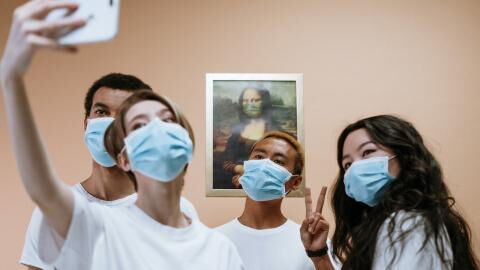Infection rates of Strep A have been going up in the UK with several deaths of young children causing alarm amongst parents. Scarlet fever is one manifestation of the bacteria and South and West London have some of the highest rates of the illness, according to new data from the UK Health Security Agency (UKHSA), as per the Evening Standard.
Discover our latest podcast
Downing Street has recently told parents to be on the lookout for warning signs of strep A infection after a primary-school pupil has become the eighth child to die in the last few weeks.
Strep A around the world

Strep A bacteria can cause many different types of infection, from minor illnesses to serious and fatal diseases. However, the type we see a lot more of is the non-invasive Strep A infections such as scarlet fever, strep throat and the skin infection impetigo.
In the US, the Centers for Disease Control and Prevention (CDC) estimates that several million cases of non-invasive group A strep illnesses occur each year and currently there doesn’t seem to be any significant increase in those numbers.
Globally, group A strep infections are quite common with the World Health Organization estimating, as per CDC:
- 111 million children in the developing world have impetigo
- 470,000 new cases of acute rheumatic fever occur each year
- 282,000 new cases of rheumatic heart disease occur each year
Read more: Strep throat outbreak: Here are the symptoms to look out for
France
France appears to be the only other country, so far, that is seeing an increase in infections with the French Health Directorate (DGS) saying on Tuesday that rising infections over the last 15 days across different regions had led to the hospitalisation of at least eight children, two of whom died. Three adult cases have also been reported, of which one died, as per Anadolu Agency.
Whilst there is no vaccine to prevent Strep A infections, antibiotics are generally very effective at treating them so people are being urged to be on the lookout for symptoms in order to diagnose the illness early. The NHS recommends:
Contact your GP if your child:
- is getting worse
- is feeding or eating much less than normal
- has had a dry nappy for 12 hours or more or shows other signs of dehydration
- is under 3 months and has a temperature of 38°C
- is older than 3 months and has a temperature of 39°C or higher
- feels hotter than usual when you touch their back or chest, or feels sweaty
- is very tired or irritable
If your GP is closed, phone the 111 service.
Read more: Strep A: The real reason for the outbreak has been revealed
Scarlet fever cases in London
Here is a list of scarlet fever cases by borough in the week up to December 4, as per the Evening Standard:
Bromley - 13 infections
Bexley - 12 infections
Ealing - 12 infections
Hammersmith and Fulham - 12 infections
Lambeth - 11 infections
Lewisham - 11 infections
Croydon - 10 infections
Hounslow - 9 infections
Richmond upon Thames - 9 infections
Wandsworth - 8 infections
Sutton - 8 infections
Southwark - 7 infections
Greenwich - 6 infections
Kingston upon Thames - 5 infections
Hillingdon - 5 infections
Harrow - 5 infections
Brent - 4 infections
Kensington and Chelsea - 2 infections
Camden - 1 infection
Barnet - 1 infection
Westminster - 1 infection
Waltham Forest - 0 infections
Redbridge - 0 infections
Havering - 0 infections
Enfield - 0 infections
Barking and Dagenham - 0 infections
Tower Hamlets - 0 infections
Newham - 0 infections
Haringey - 0 infections
Islington - 0 infections
Hackney - 0 infections
City of London - 0 infections
Sources used:
- Evening Standard 'Strep A: London’s scarlet fever hotspots revealed as parents urged to stay vigilant for symptoms'
- Centers for Disease Control and Prevention 'Group A Streptococcal (GAS) Disease'
- NHS Inform 'Streptococcus A (strep A)'
- Anadolu Agency 'French health directorate warns of increase in Strep A bacterial infection'















